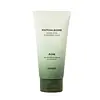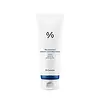What's inside
What's inside
 Key Ingredients
Key Ingredients

 Benefits
Benefits

 Concerns
Concerns

 Ingredients Side-by-side
Ingredients Side-by-side

Water
Skin ConditioningGlycerin
HumectantSodium Cocoyl Glycinate
CleansingSodium Cocoyl Glutamate
CleansingSodium Methyl Cocoyl Taurate
Cleansing1,2-Hexanediol
Skin ConditioningCitric Acid
BufferingPotassium Cocoyl Glycinate
Sodium Chloride
MaskingGlyceryl Stearate
EmollientSalicylic Acid
MaskingCamellia Sinensis Leaf Extract
AntimicrobialCitrus Nobilis Peel Extract
MaskingButylene Glycol
HumectantGardenia Florida Fruit Extract
Skin ConditioningCupressus Sempervirens Leaf/Stem Extract
Skin ConditioningCitrus Aurantium Bergamia Fruit Oil
MaskingHedera Helix Leaf/Stem Extract
AntimicrobialLitsea Cubeba Fruit Oil
MaskingRibes Nigrum Leaf Extract
PerfumingLactobacillus Ferment
Skin ConditioningCentella Asiatica Extract
CleansingPolygonum Cuspidatum Root Extract
AntioxidantScutellaria Baicalensis Root Extract
AstringentTheobroma Cacao Seed Extract
AntioxidantSaccharomyces Ferment
Skin ConditioningGlycyrrhiza Glabra Root Extract
BleachingDextrin
AbsorbentChamomilla Recutita Flower Extract
MaskingRosmarinus Officinalis Leaf Extract
AntimicrobialLactobacillus Ferment Lysate
Skin ConditioningMentha Suaveolens Leaf Extract
AstringentTaraxacum Officinale Leaf Extract
Skin ConditioningThymus Vulgaris Extract
PerfumingEthylhexylglycerin
Skin ConditioningWater, Glycerin, Sodium Cocoyl Glycinate, Sodium Cocoyl Glutamate, Sodium Methyl Cocoyl Taurate, 1,2-Hexanediol, Citric Acid, Potassium Cocoyl Glycinate, Sodium Chloride, Glyceryl Stearate, Salicylic Acid, Camellia Sinensis Leaf Extract, Citrus Nobilis Peel Extract, Butylene Glycol, Gardenia Florida Fruit Extract, Cupressus Sempervirens Leaf/Stem Extract, Citrus Aurantium Bergamia Fruit Oil, Hedera Helix Leaf/Stem Extract, Litsea Cubeba Fruit Oil, Ribes Nigrum Leaf Extract, Lactobacillus Ferment, Centella Asiatica Extract, Polygonum Cuspidatum Root Extract, Scutellaria Baicalensis Root Extract, Theobroma Cacao Seed Extract, Saccharomyces Ferment, Glycyrrhiza Glabra Root Extract, Dextrin, Chamomilla Recutita Flower Extract, Rosmarinus Officinalis Leaf Extract, Lactobacillus Ferment Lysate, Mentha Suaveolens Leaf Extract, Taraxacum Officinale Leaf Extract, Thymus Vulgaris Extract, Ethylhexylglycerin
Water
Skin ConditioningMyristic Acid
CleansingGlycerin
HumectantPotassium Hydroxide
BufferingLauric Acid
CleansingPalmitic Acid
EmollientStearic Acid
CleansingGlyceryl Glucoside
HumectantLauryl Betaine
CleansingPolyglyceryl-2 Stearate
EmulsifyingBeeswax
Emulsion StabilisingGlyceryl Stearate
EmollientStearyl Alcohol
EmollientCitrus Aurantium Dulcis Peel Oil
MaskingCitrus Paradisi Peel Oil
MaskingCitrus Aurantium Bergamia Fruit Oil
MaskingButylene Glycol
HumectantGlucose
HumectantDisodium EDTA
Melaleuca Alternifolia Leaf Oil
AntioxidantHydrolyzed Hyaluronic Acid
HumectantCitrus Limon Fruit Extract
MaskingHippophae Rhamnoides Fruit Extract
Skin ConditioningCitrus Aurantium Dulcis Fruit Extract
MaskingGlycyrrhiza Glabra Root Extract
BleachingLactobacillus Ferment Lysate
Skin Conditioning1,2-Hexanediol
Skin ConditioningSodium Hyaluronate
HumectantCandida Bombicola/Glucose/Methyl Rapeseedate Ferment
AntimicrobialLactobacillus Ferment
Skin ConditioningLactococcus Ferment Lysate
Skin ConditioningBifida Ferment Filtrate
Skin ConditioningBifida Ferment Lysate
Skin ConditioningSaccharomyces Ferment Filtrate
HumectantWater, Myristic Acid, Glycerin, Potassium Hydroxide, Lauric Acid, Palmitic Acid, Stearic Acid, Glyceryl Glucoside, Lauryl Betaine, Polyglyceryl-2 Stearate, Beeswax, Glyceryl Stearate, Stearyl Alcohol, Citrus Aurantium Dulcis Peel Oil, Citrus Paradisi Peel Oil, Citrus Aurantium Bergamia Fruit Oil, Butylene Glycol, Glucose, Disodium EDTA, Melaleuca Alternifolia Leaf Oil, Hydrolyzed Hyaluronic Acid, Citrus Limon Fruit Extract, Hippophae Rhamnoides Fruit Extract, Citrus Aurantium Dulcis Fruit Extract, Glycyrrhiza Glabra Root Extract, Lactobacillus Ferment Lysate, 1,2-Hexanediol, Sodium Hyaluronate, Candida Bombicola/Glucose/Methyl Rapeseedate Ferment, Lactobacillus Ferment, Lactococcus Ferment Lysate, Bifida Ferment Filtrate, Bifida Ferment Lysate, Saccharomyces Ferment Filtrate
 Reviews
Reviews

Ingredients Explained
These ingredients are found in both products.
Ingredients higher up in an ingredient list are typically present in a larger amount.
1,2-Hexanediol is a synthetic liquid and another multi-functional powerhouse.
It is a:
- Humectant, drawing moisture into the skin
- Emollient, helping to soften skin
- Solvent, dispersing and stabilizing formulas
- Preservative booster, enhancing the antimicrobial activity of other preservatives
Butylene Glycol (or BG) is used within cosmetic products for a few different reasons:
Overall, Butylene Glycol is a safe and well-rounded ingredient that works well with other ingredients.
Though this ingredient works well with most skin types, some people with sensitive skin may experience a reaction such as allergic rashes, closed comedones, or itchiness.
Learn more about Butylene GlycolCitrus Aurantium Bergamia Fruit Oil is the oil from the bergamot orange. It is native to Italy.
This ingredient is used to add fragrance to products. It contains limonene, linalool, and linalyl acetate.
The term 'fragrance' is not regulated in many countries. In many cases, it is up to the brand to define this term. For instance, many brands choose to label themselves as "fragrance-free" because they are not using synthetic fragrances. However, their products may still contain ingredients such as essential oils that are considered a fragrance.
When used topically, Citrus Aurantium Bergamia Fruit Oil is a photosensitizer due to its furanocoumarins. Photosensitizers make the skin and eyes much more sensitive to sunlight. Photosensitizers are linked to skin cancer.
However, more cosmetics using Citrus Aurantium Bergamia Fruit Oil are removing the furanocoumarins.
Bergamot oil was also found to have anti-inflammatory, antibacterial and antifungal properties.
Learn more about Citrus Aurantium Bergamia Fruit OilGlycerin is already naturally found in your skin. It helps moisturize and protect your skin.
A study from 2016 found glycerin to be more effective as a humectant than AHAs and hyaluronic acid.
As a humectant, it helps the skin stay hydrated by pulling moisture to your skin. The low molecular weight of glycerin allows it to pull moisture into the deeper layers of your skin.
Hydrated skin improves your skin barrier; Your skin barrier helps protect against irritants and bacteria.
Glycerin has also been found to have antimicrobial and antiviral properties. Due to these properties, glycerin is often used in wound and burn treatments.
In cosmetics, glycerin is usually derived from plants such as soybean or palm. However, it can also be sourced from animals, such as tallow or animal fat.
This ingredient is organic, colorless, odorless, and non-toxic.
Glycerin is the name for this ingredient in American English. British English uses Glycerol/Glycerine.
Learn more about GlycerinGlyceryl Stearate is a mix of glycerin and stearic acid.
It is used to stabilize the mixing of water and oil ingredients. By preventing these ingredients from separating, it can help elongate shelf life. It can also help thicken the product's texture.
As an emollient, it helps soften skin and supports barrier-replenishing ingredients.
In cosmetics, Glyceryl Stearate is often made from vegetable oils or synthetically produced.
This ingredient may not be fungal-acne safe
Fun fact: The human body also creates Glyceryl Stearate naturally.
Learn more about Glyceryl StearateGlycyrrhiza Glabra Root Extract is an extract of the roots of Licorice. It has been found to have several benefits such as skin hydrating, conditioning, and soothing.
One component, glabridin, has extra potent antioxidant and soothing properties. It has also been found to block pigmentation from UVB rays in guinea pigs.
Licorice Root also contains a flavonoid. Flavonoids are a natural substance from in plants. Flavonoids also have antioxidant properties.
Another component, glycyrrhizin, has been found to have anti-inflammatory and antimicrobial benefits. This may make licorice root extract effective at treating acne. However, more research is needed to support this.
Liquiritin is one of the flavone compounds found in licorice. It has been found to help lighten skin by preventing tyrosinase from reacting with tyrosine. When the two react, protein is converted to melanin. Melanin is the substance in your body that gives your features pigmentation.
Learn more about Glycyrrhiza Glabra Root ExtractLactobacillus Ferment is created by fermenting the Lactobacillus bacteria. It helps keep our skin's natural barrier and microbiome healthy.
Studies show lactobacillus ferment to be effective at repairing the skin barrier. Having a healthy skin barrier helps keep your skin healthy and hydrated. It also protects against bad bacteria.
As a probiotic/prebiotic/postbiotic, Lactobacillus ferment can help regular our natural biome. In fact, one study found a lack of diversity in our natural skin biome can trigger acne.
Learn more about Lactobacillus FermentLactobacillus Ferment Lysate is a postbiotic with skin soothing properties. Postbiotics are inactive molecules produced by probiotic bacteria that provide skin benefits.
This ingredient comes from the secretion of the bacteria, Lactobacillus.
Studies show this ingredient can help calm redness and may help treat the signs of photoaging; however, the evidence is inconclusive and further studies are needed.
Learn more about Lactobacillus Ferment LysateWater. It's the most common cosmetic ingredient of all. You'll usually see it at the top of ingredient lists, meaning that it makes up the largest part of the product.
So why is it so popular? Water most often acts as a solvent - this means that it helps dissolve other ingredients into the formulation.
You'll also recognize water as that liquid we all need to stay alive. If you see this, drink a glass of water. Stay hydrated!
Learn more about Water